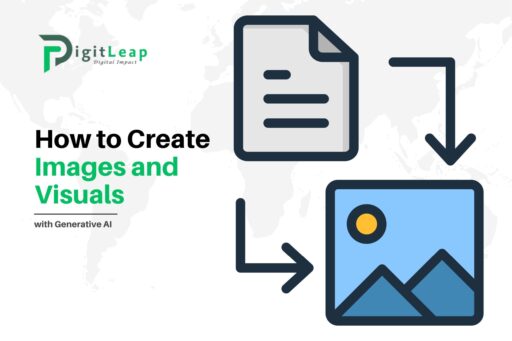In the rapidly evolving landscape of digital creativity, generative AI is revolutionizing the way we create images and visuals. Gone are the days when producing compelling graphics required specialized software expertise or significant time investment. Today, with generative AI, even non-designers can create stunning visuals that capture attention and convey ideas powerfully.

What Is Generative AI in Visual Creation?
Generative AI refers to a category of artificial intelligence technologies that can produce content—including images, videos, and even music—based on patterns learned from vast datasets. When it comes to visuals, tools like DALL·E, Midjourney, and Stable Diffusion use sophisticated algorithms to generate images from textual descriptions, sketches, or other inputs. This capability opens up endless creative possibilities, enabling users to generate unique artworks or design concepts in seconds.
Key Benefits of Using Generative AI for Visuals
- Speed and Efficiency:
Traditional design processes can be time-consuming. Generative AI drastically reduces the time required to create visuals, allowing for rapid prototyping and iteration. Whether you need a quick mockup for a presentation or a full-fledged design for a marketing campaign, AI can deliver results in a fraction of the time. - Cost-Effective Creativity:
Hiring professional designers or purchasing expensive design software may not be feasible for every business or individual. Generative AI tools democratize creative content production by providing affordable or even free alternatives that still offer high-quality outputs. - Inspiration and Innovation:
Sometimes, the challenge is not creating a visual from scratch, but finding inspiration. Generative AI can serve as a creative partner—providing unexpected ideas and visual styles that spark further innovation. Experimenting with AI-generated images can lead to entirely new artistic directions that you might not have considered otherwise. - Customization and Flexibility:
AI-powered tools often allow users to refine and tweak outputs. You can adjust styles, colors, and details to align with your brand or creative vision. This flexibility means that even if the initial generation isn’t perfect, you have a strong foundation on which to build and modify.
How to Get Started with Generative AI for Visual Creation
- Choose the Right Tool:
Explore popular generative AI platforms such as DALL·E, Midjourney, or Stable Diffusion. Many of these tools offer free trials or demos, so you can experiment without a significant upfront investment. - Craft Clear Prompts:
The quality of AI-generated visuals is highly dependent on the input you provide. Be specific with your descriptions—mention the style, color palette, and elements you want included. For example, “a futuristic cityscape at dusk with neon lights and flying cars” is likely to yield a more targeted result than a vague prompt like “city.” - Experiment and Iterate:
Don’t be afraid to try multiple prompts and variations. Generative AI thrives on experimentation. Use each iteration as a learning opportunity to refine your prompt until you achieve the desired visual outcome. - Integrate into Your Workflow:
Once you’ve generated an image, you can further refine it using traditional graphic design tools if needed. Alternatively, use it as inspiration to guide a manual design process. Generative AI can be a powerful starting point for any creative project. - Stay Updated on Advancements:
The field of generative AI is evolving rapidly. New features, improved models, and innovative applications are constantly emerging. Follow industry blogs, join creative communities, and keep an eye on updates from your chosen AI tool to ensure you’re always leveraging the latest capabilities.
Real-World Applications
- Marketing and Branding:
Create unique visuals for ad campaigns, social media posts, and website designs that set your brand apart. Generative AI enables you to produce visuals that resonate with your target audience, reinforcing your brand identity. - Product Design and Prototyping:
Quickly generate concept images for new products or design iterations. This rapid prototyping can speed up the product development cycle and foster a more agile innovation process. - Educational Content:
Enhance your presentations, infographics, and educational materials with custom, visually engaging graphics that help explain complex concepts in an accessible manner.
Conclusion
Generative AI is not just a futuristic concept—it’s a practical tool that is transforming creative workflows today. By embracing this technology, you can unlock a world of possibilities, streamline your creative process, and produce high-quality visuals quickly and cost-effectively. Whether you’re a marketer, a designer, or simply someone looking to enhance your digital content, generative AI offers a powerful, innovative solution to meet your creative needs.
Embrace the revolution, experiment boldly, and transform your creative process with generative AI.





